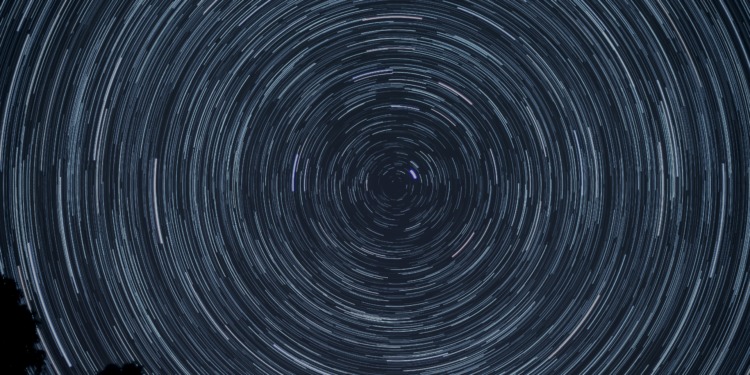The universe is thought to be composed of three components. “Ordinary matter” is what stars, planets, humans and all that’s visible are made from, but this matter only actually accounts for 5% of the universe’s total mass and energy. The remaining 95% is thought to be made up of two other mysterious substances: “dark matter” and “dark energy,” both of which are invisible and peculiar in nature, yet both of which scientists also think play profound roles in the evolution and expansion of the Universe.
Despite their ubiquity throughout space and time, scientists still know very little about these strange components that form the dark and unseen parts of the cosmos. However, their mystery may soon begin being unravelled.
At the beginning of July this year, the European Space Agency (ESA) successfully launched the Euclid space telescope up into space, embarking on a new science mission into the unknown, and aiming to “explore the composition and evolution of the dark Universe.”
The #DarkUniverse 🕵️♂️detective begins its mission!
🛰️ #ESAEuclid is on its way to unravel the cosmic mystery of #DarkMatter & #DarkEnergy, and tell us more about the curious past & ultimate fate of our Universe.
Full story 👉 https://t.co/g3HivC9bDE#ExploreFarther pic.twitter.com/AcxEycCByW
— ESA's Euclid mission (@ESA_Euclid) July 1, 2023
“Exploring the dark Universe”
After the idea for the Euclid mission was first proposed to ESA in 2007, the space telescope began construction in 2013 by the European space technology and satellite manufacturing company, Thales Alenia Space. After several years of assembly and testing, the Euclid spacecraft was finally ready for its mission at the start of this year.
On July 1 2023, the Euclid spacecraft was launched into space from Cape Canaveral Space Force Station in Florida, marking the start of its mission “exploring the dark Universe.”
At present, the spacecraft is still travelling on a month-long journey to its space vantage point 1.5 million km from Earth; a location known as Sun-Earth Lagrange point 2 (L2) which ESA calls an “orbital ‘sweet-spot.’”
“It is a great place from which to observe the larger Universe,” states ESA. L2 is also the location from which the James Webb Space Telescope views the cosmos.
Related Articles: First Disabled Astronaut in History: Space Is for Everyone | One Year on, What has the James Webb Space Telescope Seen? | Aliens on Mars? NASA Discovers Signs of Ancient Life | NASA Unveils Deepest-Ever Images of the Universe
Once the initial testing and calibration of Euclid’s instruments and systems are complete, the telescope will spend six years observing one-third of the sky, aiming to map out the Universe across space and time.
To do this, Euclid will utilise two onboard scientific instruments to analyse light from billions of galaxies up to 10 billion light-years away. Capturing highly detailed images of these distant galaxies, Euclid will generate “the largest, most accurate 3D map of the Universe.”
The vast volume of data Euclid collects will then be transmitted back down to Earth, allowing scientists on the ground to “download the universe,” learning more about its structure, history and expansion; the nature of dark matter and dark energy; and the role of gravity.
What could Euclid uncover?
“The Euclid mission aims to uncover the mysteries of the dark Universe,” states ESA. In fact, there are two key themes which ESA says Euclid – who they call “the dark Universe detective” – will address:
- “What are the fundamental physical laws of the Universe?”
- “How did the Universe originate and what is it made of?”
But what kind of mysteries is ESA talking about? Looking beyond our galaxy, ESA explains that the top five mysteries that Euclid will help to solve are:
Unveiling the structure and history of the Universe. By observing and mapping out the shape and distribution of billions of galaxies across one-third of the sky – looking billions of years back in time – Euclid will provide insight into the structure and history of the “cosmic web.”
Uncovering the nature of dark matter. Existing in the space between galaxies, the invisible mass of dark matter makes up 25% of the universe. Scientists know it exists there because of how its gravity affects the path of starlight (an effect called “gravitational lensing”) but they don’t know what dark matter is made of. Through its observations, Euclid will try to unveil how dark matter behaves, elucidating how it’s distributed throughout the universe and measuring gravitational lensing.
Exploring changes in the expansion of the Universe. The Universe has been expanding since the Big Bang, and though scientists thought this would gradually slow down, they have since found out it’s actually the opposite – it’s accelerating. Euclid will look back through 10 billion years of the Universe’s history to examine changes in expansion over time.
Uncovering the nature of dark energy. Though it makes up 70% of the Universe, no one knows what dark energy is, but scientists do think it’s responsible for the accelerating expansion. It was actually Albert Einstein who proposed the idea of an energy field across the entire cosmos, and Euclid will now try to understand better how this mysterious energy works.
Investigating our understanding of gravity. With his theory of general relativity in the early 1900s, Einstein also revolutionised the way in which we think about gravity and space time. Since then, his ideas have repeatedly been proven correct, however, Euclid will now test if the theory holds true over long distances and timescales with high precision. If it doesn’t, “we will have to find a new theory,” states ESA.
Understanding the unknown
Euclid’s launch into space just over three weeks ago marked a significant milestone in humanity’s quest to better understand the mysteries of the Universe and what it’s made of, aiming to “uncover the secrets of dark matter and dark energy.”
“The successful launch of Euclid marks the beginning of a new scientific endeavour to help us answer one of the most compelling questions of modern science,” said ESA Director General Josef Aschbacher.
“If we want to understand the Universe we live in, we need to uncover the nature of dark matter and dark energy and understand the role they played in shaping our cosmos,” said ESA Director of Science, Carole Mundell.
The spacecraft is still on its way to L2 at the moment, but ESA recently announced that the two instruments Euclid will use to observe and map the Universe have now seen their “first light.”
What’s more, just this week ESA announced that Euclid’s “ground segment” is ready to begin receiving data from the telescope.
“We are now fully prepared to download the ‘Universe’ from Euclid,” said the Head of Ground Systems Engineering and Innovation at ESA, Mariella Spada.
What will Euclid discover, staring deep into the dark and invisible parts of our Universe?
We’ll have to wait and see.
👋 Another view of liftoff for #ESAEuclid 🚀🤩
📷 More pics 👉 https://t.co/2KgE8g67l5 pic.twitter.com/SzZJX8vga0
— ESA (@esa) July 1, 2023
Editor’s Note: The opinions expressed here by the authors are their own, not those of Impakter.com — In the Featured Photo: Time lapse photo of the night sky. Featured Photo Credit: Patrick McManaman.










